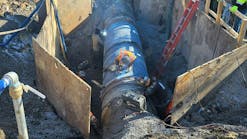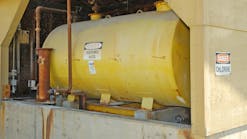WaterConnections
The challenges facing wastewater pumping systems are increasingly complex. Not only are wastewater pumps required to handle more flow, they are also facing new challenges like rising energy costs and nondegradable solids that increase the risk of clogging, leading to unscheduled maintenance, costly downtime, or even sanitary sewer overflows (SSOs). With new materials finding their way into modern wastewater, pumps are being asked to handle more today than ever before. Here are the top five offenders:
Paper towels: Unlike toilet paper, paper towels are designed to stay intact when wet, so they often tangle into fibrous clumps that jam sewer systems. A recent study found that paper towels (mostly from public restrooms) account for 42 percent of all pump clogs.
Flushable wipes: In 2015, personal wet wipe sales hit an estimated $2.2 billion. Regular toilet paper dissolves in water in minutes. New flushable wipes, however, do not. They can reduce a pump’s flow rate by as much as 30 percent.
Disinfecting and baby wipes: Pre-moistened disinfecting and baby wipes dissolve even more slowly than flushable wipes and are more hazardous to pumps.
Feminine hygiene products: Like pre-moistened wipes, tampons are far from pump friendly, even if they are labeled ‘flushable’.
Fats, oil and grease: Fats, oil and grease (FOG) cling to solids and fibers, creating balls of sludge know as fatbergs. In September 2017, workers in London discovered one of the biggest fatbergs ever seen, weighing an estimated 130 metric tons — or the size of 11 double-decker buses!
So how do we stay one step ahead of the challenge and ensure our wastewater networks can handle these pump-clogging materials? New wastewater pump technologies can help you reduce service time and the risk of SSOs, get full control and visibility of your pumping systems no matter where you are, and comply with EPA Tier 4 requirements while reducing fuel usage.
Non-clog technology: Today’s wastewater requires non-clog technology like self-cleaning impellers with sustained hydraulic efficiency to help wastewater pumps power through the challenging materials that come their way.
Smart monitoring: New smart monitoring technologies give you peace of mind through real-time insights into the status of your system, helping to optimize flow and energy usage. Connected alert systems send text messages or emails when maintenance is required.
Green engines: New pump technologies are equipped with high-performance EPA Tier 4-compliant engines that can decrease emissions by 90 percent and fuel consumption by 10 percent.




